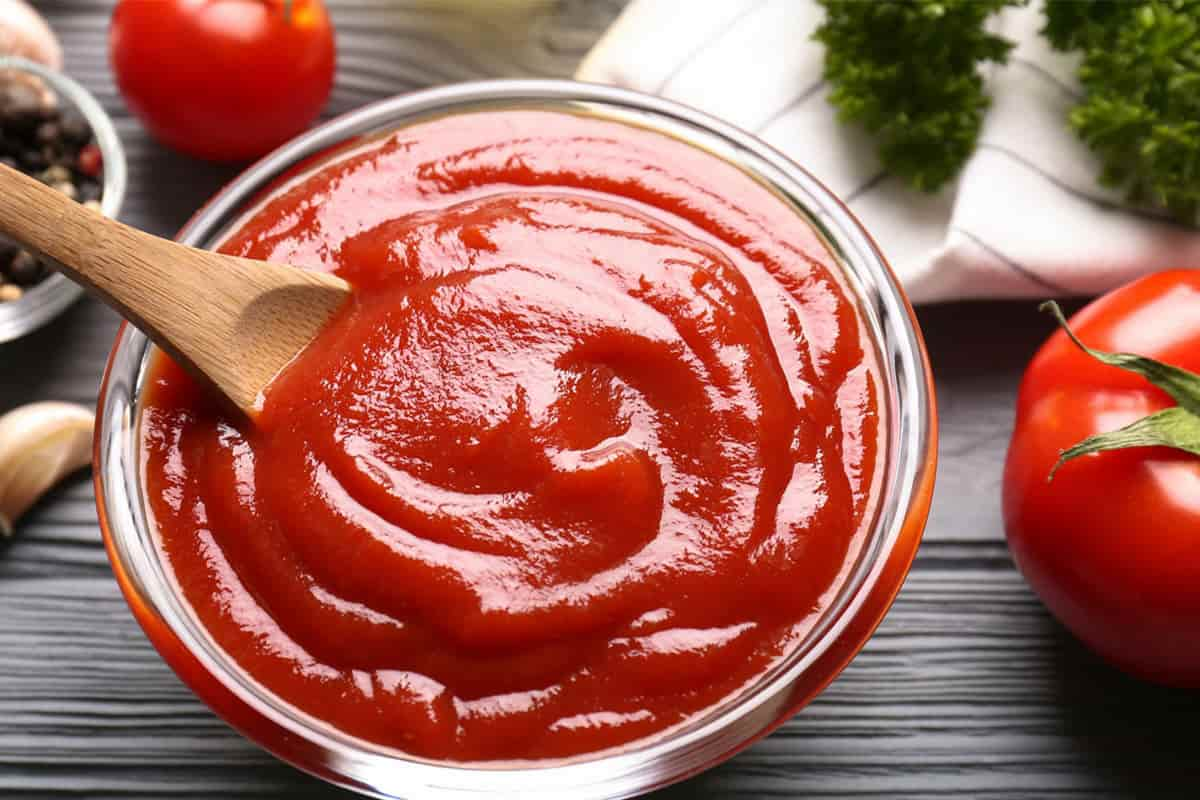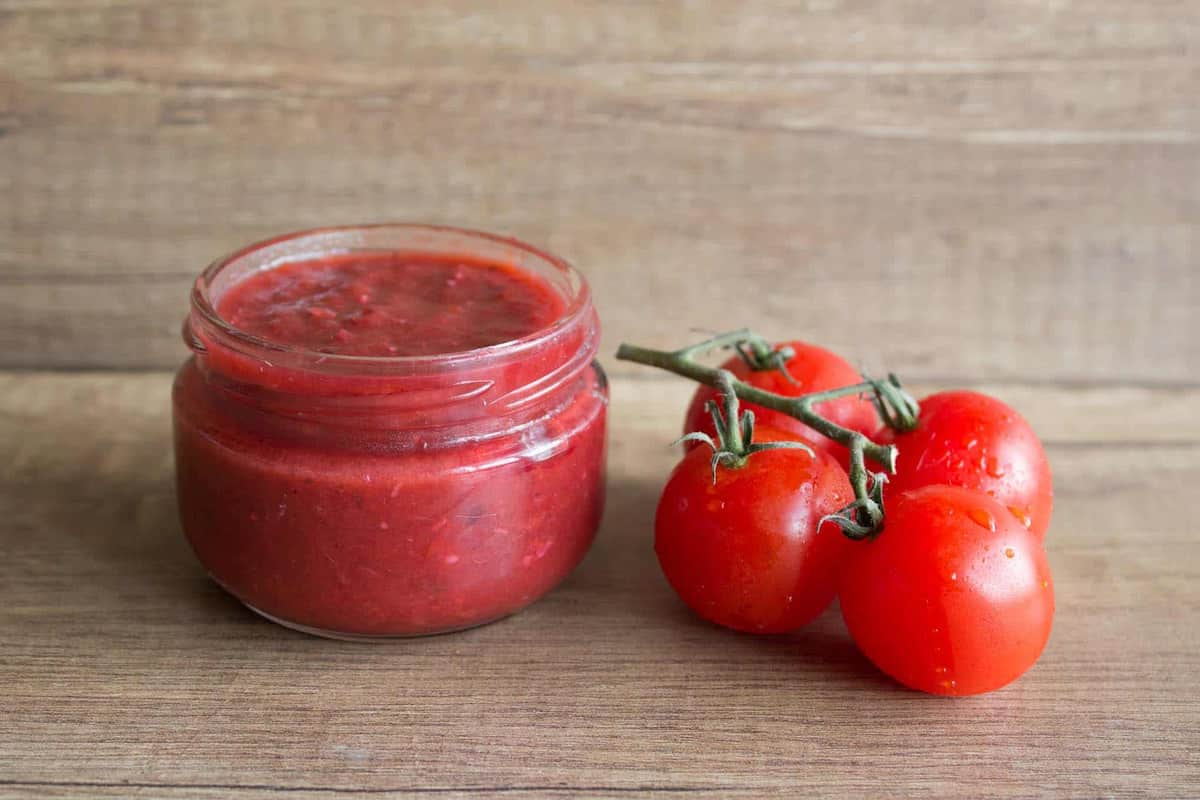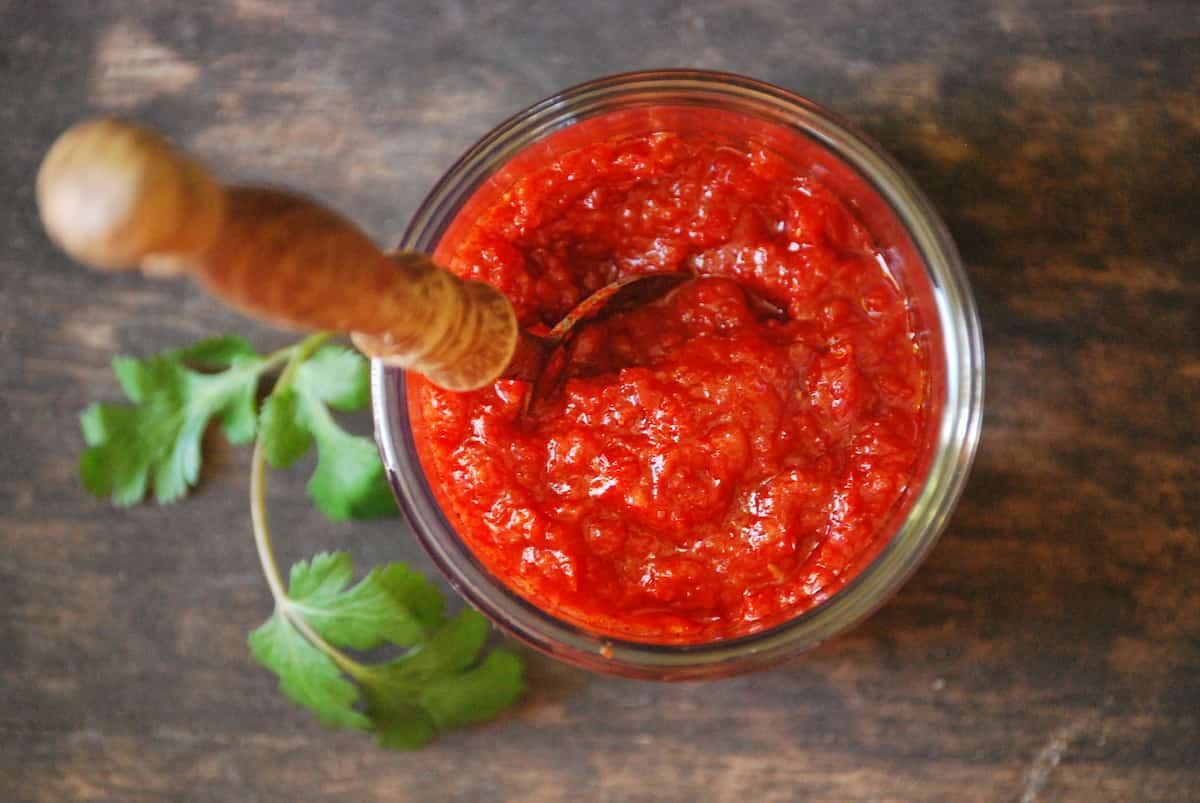tomato paste nutrition facts and benefits that may surprise you
There are many advantages, properties, and benefits to consuming tomato paste and other types of tomato products
Tomato paste is a nutrition product, so you must learn many facts about that
Tomato paste is a versatile ingredient that you should always have on hand in the kitchen, regardless of how frequently you prepare meals from scratch
Since it is merely the concentrated flavor of tomatoes, it possesses the same level of nutritional content as fresh tomatoes
Just one tbsp of tomato paste provides you with 3 to 6 percent of the daily dose suggested for iron, potassium, and B vitamins
Tomato paste is also a strong source of antioxidants
Basics Cooking fresh tomatoes over low heat till they begin to separate into little pieces results in the production of tomato paste
After that, the flesh is squeezed to remove the skin and seeds, and it is then boiled for at least a few hours, during which time the moisture in the flesh evaporates and it turns into a thick paste
Salt and olive oil are normally included; however, some commercial goods include additional seasonings and sweeteners as well, including high fructose corn syrup
Generally, salt and olive oil are included
One can of tomato paste that is 6 ounces can be used to produce a pot of chili or stew that serves six people, which works out to 1 ounce of tomato paste per serving
The nutrition facts presented are for one tablespoon, which is approximately half of the total quantity

Lycopene Lycopene is a potent antioxidant that is a member of the vitamin A family
The best natural source of lycopene may be found in tomatoes
Following a review that was published in November 2011 in the “Cochrane Database of Systematic Reviews,” despite its frequent appearance in the media due to the possibility that it could prevent prostate cancer, research has yielded contradictory findings
According to the findings of a study that appeared in the issue of the journal “Neurology” that was released in October 2012, men who consumed a greater quantity of lycopene had a reduced chance of experiencing a stroke
Although there are no specific recommendations for lycopene that should be consumed daily, it is estimated that consuming between 4 and 8 milligrams would be sufficient to provide positive health effects
When you eat one tablespoon of tomato paste, you will receive 4
6 milligrams of lycopene
Vitamin C Vitamin C is primarily recognized for its role as an antioxidant; however, it is also necessary to produce neurotransmitters as well as collagen, which helps to support your hair and tendons
Because of its health benefits, it helps protect your body from the harm done by free radicals across your entire body, including giving antioxidant protection to the proteins and fats found in your brain
The presence of vitamin C in your skin serves to prevent the harm that might be caused by exposure to the sun
The recommended daily intake of vitamin C for men is 90 milligrams, while the recommended daily intake for women is 75 milligrams
The recommended daily amount for women who are pregnant is increased to 80 milligrams

Everyone who smokes requires an additional 35 milligrams daily
The amount of vitamin C included in one tablespoon of tomato paste is 3
5 milligrams
Advice for Serving Reduce the concentration of the tomato paste by mixing it with liquids such as water, broth, fresh tomatoes with their juice, or the liquids from the meal you are preparing
In a pinch, you can use it to make a basic tomato sauce, but if you don’t add any seasonings to it, like garlic, onion, paprika, or oregano, it won’t have much flavor
Chili, stir-fries, and soups all benefit from having tomato paste as their foundation
Make a filling vegetable soup by combining tomato paste, vegetable broth, garlic, corn, white beans, broccoli, and flavors in the appropriate proportions
Mustard, sliced ginger, tinned tomatoes, limited chicken broth, and tomato paste can be put together to create a topping for baked chicken
Have you ever questioned whether a tomato belongs in the category of a fruit or a vegetable? Tomatoes are a type of fruit by botanists since they contain seeds and create from the ovum of plant species
On the other hand, tomatoes are typically considered to be vegetables from a culinary point of view because they are prepared and consumed in the same manner as other vegetables
Tomatoes, in either case, are a delectable as well as a nutrient-dense food that is an excellent complement to most healthy eating plans
Tomatoes have been found to contain several essential minerals and chemicals for human health, including, but not limited to, vitamin C, carotenoid, iron, and vitamin K

Details on the Nutrition of TomatoesThere are 16 calories, 0
8 grams of protein, 3
5 grams of carbohydrates, and 0
2 grams of fat in one small tomato that measures 2 2/5 inches in diameter
Tomatoes are a fantastic food choice for anyone looking to increase their vitamin C, fiber, or vitamin K intake
The United States Department of Agriculture (USDA) has produced the following list of nutritional facts
Cals: 16
Fat: 0
2g
Na+: 5mg
Simple sugars: 3
5g
Fiber content: 1
1g
Fructose: 2
4g
Nutrients: 0
8g
Vitamin C: 12
5mg
Vitamin K: 7
2mcg
Carbs
There are 3
5 grams of carbohydrates in a tomato that weighs 91 grams
Among the carbs, the naturally occurring sugars account for 2
4 grams, while fiber contributes 1
1 grams to the total
Tomatoes have a low glycemic index, making them an ideal food choice
Tomatoes, like most other fruits and vegetables, contain extremely little fat
ProteinA fresh tomato that is just under 1 gram in size contains just under 1 gram of protein
Minerals and nutrientsTomatoes are an excellent food choice for their high potassium and vitamin C content
Tomatoes include carotenoid, zeaxanthin, and lycopene in addition to the vitamin A that they provide, which are all considered to be advantageous forms of the vitamin
Calories There are 16 calories in a single tomato, 73% of which come from carbohydrates, 18% from protein, and 9% from fat
One small tomato weighs 91 grams
Advantages to One’s HealthBecause tomatoes are high in phytonutrients, eating them can have several positive effects on one’s health

Can Lower the Risk of Developing Prostate Cancer Tomatoes are a good source of an antioxidant called lycopene, which has been linked to a lower risk of developing prostate cancer
Lycopene has been shown to inhibit the proliferation and spread of cancer cells by interfering with a few different metabolic pathways
Because the processing of tomato meals entails extracting water and leaving behind a more saturated tomato product, the amount of lycopene that is found in packaged tomato foods (including condiments or canned tomatoes) is higher
Fosters Heart Health The lycopene in tomatoes combines synergistically with other antioxidant vitamins (such vitamins A, E, and C) to give compounding benefits for heart health
Lycopene in tomatoes has been linked to a decrease in oxidized LDL and arterial plaque, according to some research
In addition, the potassium found in tomatoes is well-known for its ability to lower blood pressure
Facilitates Vision Tomatoes are loaded with antioxidants, including the provitamin A carotenoids lutein and zeaxanthin
Both of these vitamin A forms are stored in the retina, protecting it from macular degeneration as you get older
The fat-soluble vitamins that are necessary for excellent eyesight are better absorbed when tomatoes are consumed as part of recipes that include some fat (such as in a salad with olive oil)

Prevents Skin Cancer and UV Rays Tomatoes’ phytonutrients offer some protection from the sun’s harmful rays
7 Although eating tomatoes won’t prevent skin cancer by themselves, doing so may increase your body’s resistance to the harmful effects of some types of sunlight
Some of These 16 Skin-Healthy Foods May Also Help Prevent Diabetes Complications In rats, tomatoes have been shown to have an antihyperglycemic effect, but this has not been replicated in humans
Tomatoes still provide benefits for diabetics, despite this
Antioxidant stress, or oxidative stress, is increased by diabetes, however, tomatoes have been found to lower this stress
Symptoms of the condition, including as inflammation, increased cholesterol, and tissue damage, is ameliorated as a result
Allergies Tomatoes may trigger an oral allergy in people who are sensitive to grass pollen during the spring and summer
The lips, mouth, tongue, and throat may swell, or you may experience an itchy mouth, ears, or throat
If you think you might have a tomato allergy, it’s best to discuss it with your doctor
Negative Consequences Tomatoes have a high acid content
Tomatoes and tomato derivatives may trigger acid reflux and heartburn in certain people
Varieties Countless unique tomato cultivars exist
Tomatoes come in a wide range of sizes, forms, colors (from green to red, yellow, and orange), and shapes (from tiny spheres to huge ovals)
Sweetness and acidity levels shift according on harvest time and growth circumstances
Tomatoes can vary greatly in the number of seeds they contain, with some varieties, like the plum tomato, having very few

Tinned diced, chopped, or puréed tomatoes are available as well to fresh tomatoes and typically include other additives like sodium
Tomatoes are used in a wide range of food preparations, from tomato paste (made from concentrated, cooked tomatoes) to sundried tomatoes to vegetable juice mixes (may be sold on their own or packed in oil)
Ketchup and salsa, to name just two, are two of many condiments that start with tomatoes
Make sure to read the label before buying any commercial tomato sauce
Caution should be exercised when using some brands of jarred tomato sauce due to the high levels of sugar and salt that they may contain
You can avoid these additives by making your own sauce with fresh or canned tomatoes
At Optimal Times Try to find tomatoes that are firm and plump, with skin that is smooth and shiny
It’s important that the hue is consistent
Don’t buy tomatoes that have any signs of damage, such as bruising, soft patches, or mold
In the summertime, fresh tomatoes from the local farmers’ market taste the best
Food Preservation and Safe Storing Fresh tomatoes, contrary to common opinion, should not be refrigerated
Tomatoes should be stored in a cool, dry place to prevent the flesh from becoming mealy and the flavor from deteriorating
Make sure the tomatoes are completely clean before you start slicing into them
When tomatoes are sliced, they should be used within a few months or stored in the fridge
Any leftovers of a dish that contains cooked tomatoes must be eaten within a week

Preparation StepsYou can find tomatoes in many different dishes, including sandwiches, soups, dips, sauces, and soups
Tomatoes are versatile and can be consumed both raw and cooked
Sauteing, grilling, or roasting tomatoes are all great options
Flavor and texture are amplified and made more succulent by roasting
Roasted tomatoes taste best when seasoned with a variety of herbs and spices such as olive oil, garlic, red pepper, and other seasonings
You could eat roasted tomatoes on their own, or you can purée them into a tomato sauce and use it as a topping for barbecued, roasted, or cooked pork, chicken, or fish
Tomatoes can be used to make a basic marinara sauce, and the sauce and other tomato-based products can be used to season other dishes, including pasta squash, chili, and stews
Include as much or as little basil, oregano, parsley, and garlic as you prefer in your sauce
Packed pork and rice in a big tomato make a filling meal
This website was built with the intention of assisting you in making the decision that lies in front of you, and that remains our primary focus
Please feel free to give us a call if you have any questions or concerns that remain unanswered
Your order can be tailored to meet your specific requirements, regardless of the tomato products you select to purchase









